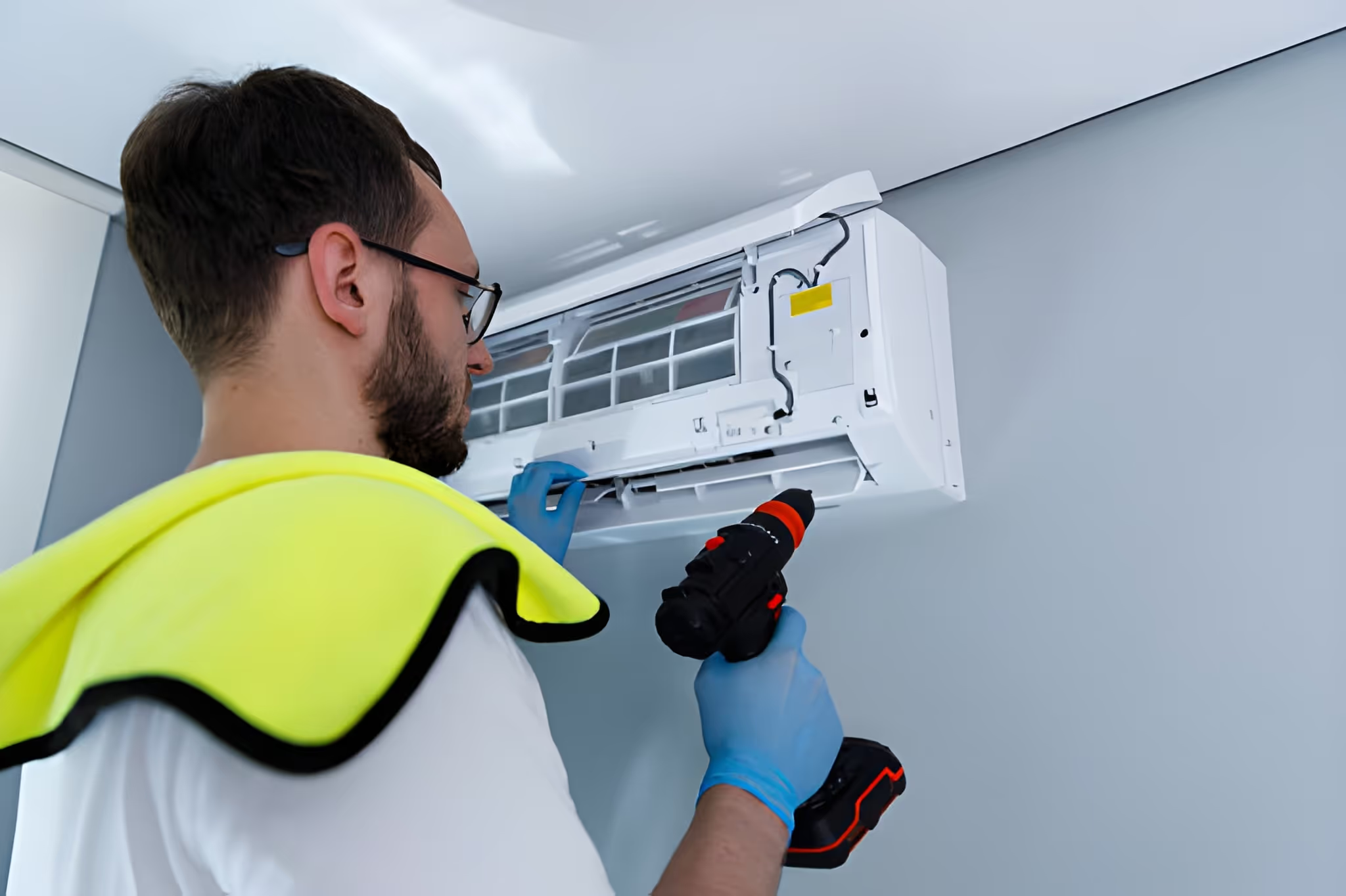Mini-Split Tune-Up in Wesley Chapel, FL


Common mini-split problems in Wesley Chapel homes
- Reduced airflow from indoor heads due to clogged filters, indoor coil buildup, or fan motor wear.
- Short cycling or extended run times caused by incorrect refrigerant charge, dirty coils, or control issues.
- Water leaks and indoor staining from slow or blocked condensate drains, aggravated by humid air and biological growth.
- Corrosion or degraded outdoor components from frequent storms and humidity exposure.
- Electrical faults, loose terminals, or failing capacitors that cause intermittent operation or safety concerns.
- Uneven room temperatures from improper head orientation, restricted airflow, or thermostat calibration needs.
What a seasonal mini-split tune-up includes
A thorough tune-up covers both indoor and outdoor components, with the goal of restoring factory-level performance and documenting results. Typical tasks performed during a mini-split tune-up in Wesley Chapel, FL include:
- Clean and inspect air filters: Remove, deep-clean or replace filters to restore airflow and indoor air quality.
- Clean indoor evaporator coils and drain pan: Remove dust, pollen, and biological film to prevent mold and improve heat transfer.
- Clean outdoor condenser coil and fan: Clear debris, grass clippings, and pollen that reduce outdoor heat rejection.
- Check refrigerant pressures and temperature split: Verify refrigerant charge is within specification and cooling effect across the system is correct.
- Tighten and inspect electrical connections: Ensure safe, reliable operation by checking terminals, fuses, and wiring.
- Test controls and thermostats: Confirm correct communication between indoor heads, outdoor unit, and remote controllers or wall thermostats.
- Measure motor currents and run voltages: Evaluate compressor and fan motors to spot signs of impending failure.
- Inspect condensate drainage: Clear traps and drains, check condensate pump operation where applicable, and test for proper downhill flow.
- Lubricate accessible moving parts: Where applicable, reduce wear on fans and links.
- Visual inspection for corrosion and physical damage: Identify components subject to storm or salt exposure and recommend protective actions.
- Provide before-and-after performance documentation: Record key operating numbers so you can see measurable improvements.
Diagnostic approach and how we check performance
A clear diagnostic workflow ensures issues are identified quickly and fixes are targeted:
- Start with system history and visible symptoms reported by the homeowner.
- Run the unit to measure baseline operating data: suction and discharge temperatures, indoor head Delta T (temperature drop), airflow feel, and electrical draw.
- Perform targeted cleaning and adjustments.
- Re-test the same parameters to confirm improvements.
- Report findings in plain language with recommended follow-up items if any concern requires scheduling for repairs or parts replacement.
This method provides objective before-and-after comparisons so you can see improvements in cooling capacity, efficiency, and noise levels.
Repairs, common solutions, and what to expect
Many tune-up findings are resolved during the same visit. Typical repairs or adjustments completed during a tune-up include:
- Replacing or professionally cleaning heavily soiled filters.
- Clearing and sanitizing condensate lines and pans to eliminate leaks and odors.
- Recharging refrigerant only when pressure readings indicate undercharge or leak; any suspected leak requires diagnosis and repair before recharge.
- Tightening or replacing worn electrical connectors and fuses to eliminate intermittent faults.
- Adjusting fan speeds or balancing indoor heads for more even distribution.
- Replacing small wearable parts such as capacitors or fan motors when tests indicate imminent failure.
Because Florida systems often show accelerated wear from humidity and pollen, some tune-ups uncover components that are best replaced proactively to avoid peak-season failures.
Recommended frequency, expected duration, and cost notes
- Recommended frequency: For Wesley Chapel homes, schedule at least one professional tune-up per year; however, two tune-ups annually (spring and fall) are strongly recommended when the system is used heavily year-round or if you have allergy concerns. Biannual checks keep refrigerant, coils, and drainage systems in better condition through the humid summer months.
- Expected duration: A comprehensive tune-up for a typical single-zone mini-split usually takes 60 to 90 minutes. Multi-zone systems or units with access challenges may take longer.
- Cost considerations: Cost varies depending on the number of indoor heads, complexity of the installation, and any repairs identified during inspection. Because local climate accelerates some wear patterns, expect variability based on system age and condition. A professional tune-up always includes documented findings so you can prioritize necessary repairs.
Before-and-after performance checks you should expect
A quality service includes measurable checks so you can verify value:
- Indoor head temperature drop (Delta T) recorded before and after cleaning.
- Measured airflow or a clear description of airflow improvement.
- Refrigerant pressure readings and confirmation whether charge is within specification.
- Electrical current and voltage readings for compressor and fan motors.
- Visual confirmation of clear condensate pathways and functional pumps.
These metrics demonstrate improved efficiency and provide a baseline for future diagnostics.
Long-term benefits and homeowner maintenance tips
Regular seasonal tune-ups extend equipment life, lower power bills by restoring efficiency, reduce emergency repairs during peak heat, and improve indoor comfort and air quality. For Wesley Chapel homes, small homeowner actions between professional visits make a big difference:
- Clean or rinse indoor filters every 2 to 4 weeks during heavy use.
- Keep outdoor unit area free of debris, grass clippings, and excessive vegetation.
- Monitor condensate pan for standing water and odors.
- Use scheduled tune-ups in spring and fall to prepare for heavier cooling and intermittent winter use.
A focused seasonal mini-split tune-up in Wesley Chapel, FL addresses common local influences like humidity, pollen, and storm exposure, and delivers documented performance improvements that save energy and prevent inconvenient breakdowns during the hottest months.
Service Areas


